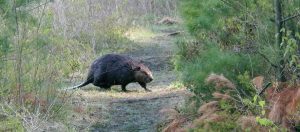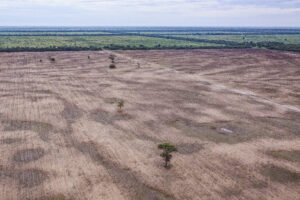The illegal trafficking of native species is one of the major threats causing biodiversity loss on a global scale, particularly in countries with rich wildlife like Argentina.
Beyond the individual cruelty towards animals, this illicit activity triggers a cascade of devastating consequences that irreversibly alter ecosystems and impoverish the natural heritage of the planet.
Ecosystem Imbalance and Biodiversity Loss
When species are removed from their natural habitats for trade, essential food chains and ecological relationships are disrupted. The drastic population decline of certain species, especially predators or pollinators, can lead to a domino effect, affecting other species that depend on them.
This leads to an ecological imbalance, where certain populations may grow unchecked (due to the absence of their natural predators) or decrease drastically (due to the loss of their food sources or pollinators), compromising the overall health of the ecosystem and ultimately resulting in biodiversity loss.
Threat of Extinction for Native Species
The trafficking of endangered species is particularly alarming. The demand for rare or exotic animals for private collections, pets, or for use in traditional medicine pushes these species to the brink of annihilation.
The constant extraction of individuals from already reduced populations hinders their natural recovery, accelerating their path to extinction. In many cases, conservation efforts cannot keep up with the pace of illegal extraction.
Introduction and Spread of Invasive Species

Paradoxically, trafficking also contributes to the introduction of invasive species. Animals that are released or escape from captivity in environments that are not their own can become a serious threat to native species.
They compete for resources, transmit diseases to local populations that lack immunity, and may even prey on native species, causing irreparable damage to local biodiversity loss and the functionality of the ecosystem.
Habitat Degradation and Destruction
To capture species, traffickers often resort to destructive methods that severely damage natural habitats.
Deforestation, nest destruction, alteration of water bodies, and the use of harmful traps and baits are common practices that not only affect the target species but also the entire natural environment surrounding them.
This habitat degradation reduces the ability of ecosystems to sustain life and provide vital services, such as water purification or climate regulation.
Impact on Human and Animal Health
The illegal trade of animals also poses a significant risk to public health. Handling of wild animals and transportation in unhygienic conditions facilitate the transmission of zoonotic diseases (those that pass from animals to humans), such as viruses and bacteria.
Furthermore, the absence of adequate health controls in illegal trafficking can introduce dangerous pathogens to populations of domestic and wild animals, with unpredictable consequences.


